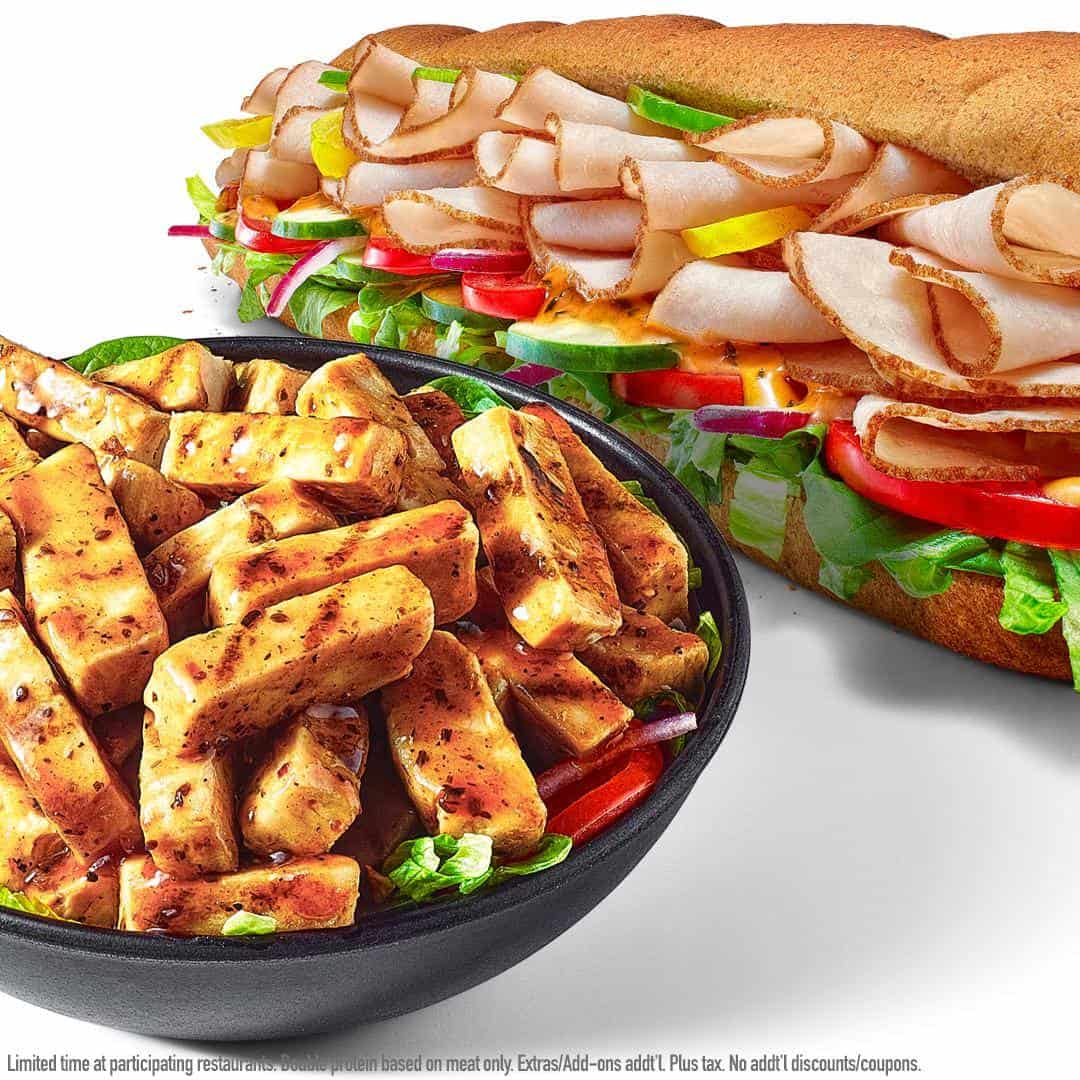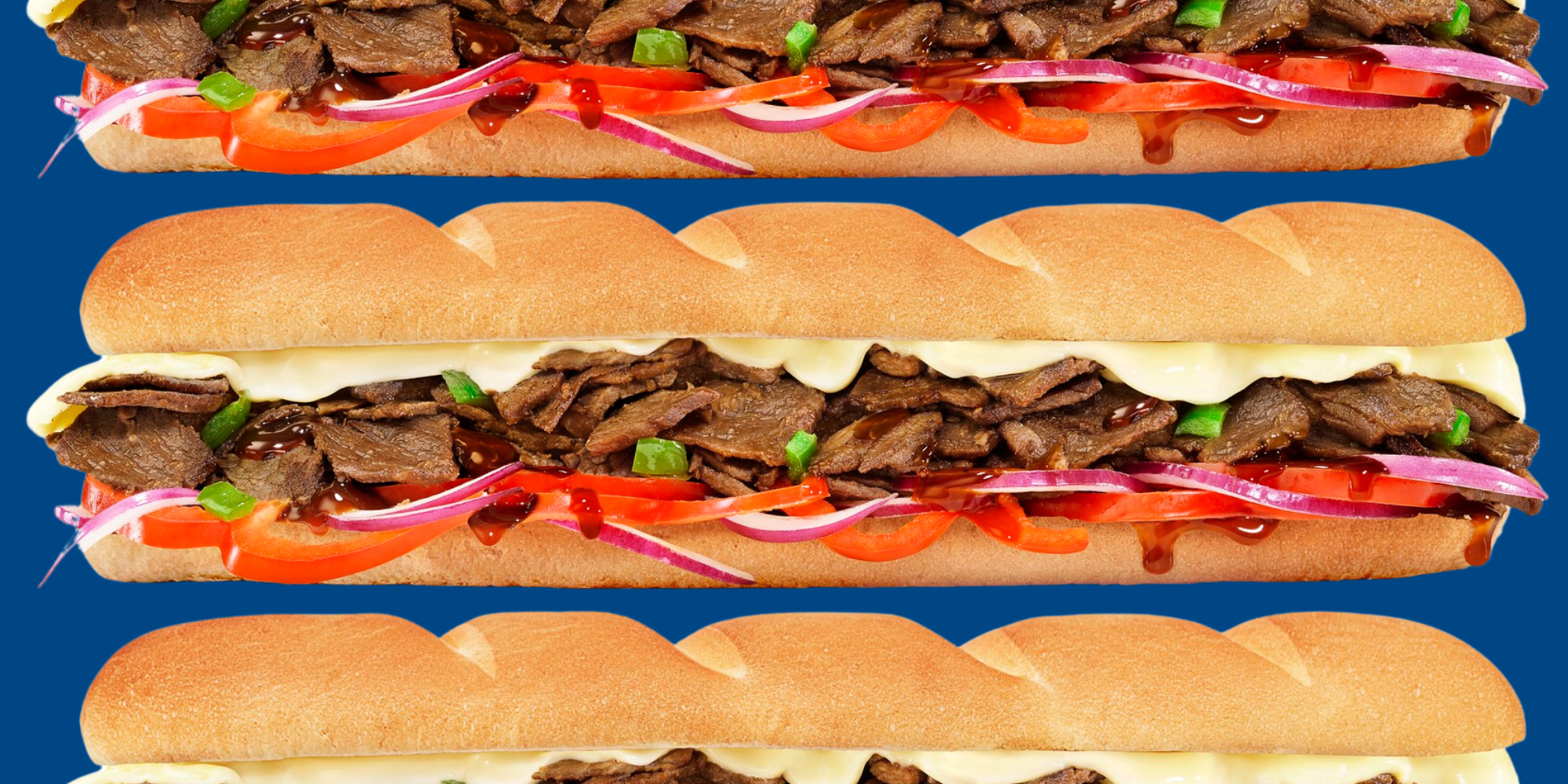Where Does Subway Get Its Meat?
What is the source of Subway meat?
Turkey and cold cut combo meats from Subway are supplied by Iowa-based West Liberty Foods.
This is not the first time West Liberty Foods has been recognized as a top Subway supplier.
Subway uses chicken that is antibiotic-free and comes from a variety of suppliers including West Liberty Foods. Perdue and many other industry names.
Ham and steak are just two of the many meats Subway buys from various suppliers, and the chain has stated that it relies heavily on local suppliers across the United States.
What is the best menu at Subway?
This question has no definitive answer, as everyone's taste buds differ.
Here are the other best Subway sandwiches people also love.

Last Thoughts
As expected, it was clear that Subway is new to this whole process. The woman who made the subs looked me over like I was an absolute nut when I asked which breads are vegan.
Thankfully I knew a few of them were vegan (Roasted Garlic, Sourdough, Light Wheat English Muffin, Hearty Italian and Hearty Italian White), so this wasn't a big deal. It's likely that the fact that gloves weren't changed between subs with meat or without, as well as using the same knife, would have been a problem for most vegetarians. If this is a major issue for you, make sure to request they wash or change them at the time of ordering.
The woman at the register told me that Subway is planning to choose one of the three options for national distribution. Any of these three options would make me happy over the current Veggie delight. I am also very glad to hear that Subway is adding a vegan option to their menu.
I can only hope that the test run here in the DC area goes smoothly, so the next time I'm stuck deep within the depths of nowhere Pennsylvania in need of a 12 inch meal, I'm not trying to piece together something from a dirty gas station's convenience store.
Classic Vegan Subs, Wraps, Salads, Or No Bready Bowls
Vegan Breads
Vegan Toppings
Vegan Sauces
Additional Vegan Menu Items
Attention! Please note that some countries outside of the U.S. offer a veggie patty that contains milk and egg. In the U.K., they do offer vegan cheeseeZe and a plant-based steak.

Subway Series Italianos
Subway's biggest meal?
Subway Club is their largest meatiest sandwich. This sandwich is loaded with three types of meat: Black Forest ham, Genoa salami, and roast beef. The Subway Club also includes all the standard veggies and condiments, making it a true classic and one of Subway's best-selling sandwiches.
Black Forest ham, on the other hand, is a thinly sliced ham that has been seasoned and smoked with herbs and spices. Genoa salami, on the other hand, is an Italian dry-cured sausage that is made with pork and beef. Finally, roast beef is slow-cooked beef that is sliced thin and tender.
The combination of these three meats creates a mouth-watering flavor and texture that is hard to resist. Subway Clubs are also served with freshly baked bread. This makes it a delicious and filling meal.
Subway also offers other meaty sandwiches, such as the Spicy Italian and the Steak and Cheese. However, the Subway Club stands out as the biggest and meatiest sandwich on the menu.
Subway'S biggest meatiest sandwich is the Subway Club, which features Black Forest ham, Genoa salami, and roast beef. This sandwich will satisfy any meat-lover's cravings.

Subway Meat Products: Sustainable and Healthy Changes
Subway has made significant changes to its meat products in order to make healthier and more sustainable food choices. Recognizing the importance of ethical practices and a responsible supply chain, Subway has made substantial improvements to its popular meat options. Subway offers healthier and more antibiotic-free options. Subway, for example, is committed to moving all its meats in this direction. Subway emphasizes its commitment to producing meat sustainably and ethically without harming the environment.
Subway's ongoing transformation has seen it continue to work with suppliers that prioritize ethical and sustainable practices. By working closely with these meat providers, Subway ensures that the animals are raised in humane conditions, and the production processes adhere to strict environmental standards. This commitment to ethical sourcing extends throughout the entire supply chain, from farm to sandwich. Subway uses organic fertilizer, which is provided by one of their poultry suppliers, to turn chicken carcasses in fertilizer. Another chicken supplier also has a 50-acre Wetland, which treats wastewater from poultry facilities and supports many species of wildlife.
To offer customers healthier options, Subway has also focused on reducing artificial ingredients and providing fresh meat. This approach enables Subway to deliver high-quality products that align with the growing demand for healthier, more natural food choices. Subway prioritizes fresh ingredients to provide its customers with a tasty and healthy dining experience.
Subway is conscious of the cost of its food while making these changes. The company has invested in efficient processes and sustainable sourcing methods to mitigate any potential impact on prices. Subway's aim is to strike a balance between offering affordable options and ensuring the well-being of the planet and its consumers.
Subway is committed to creating healthier and more sustainable food options. This commitment can be seen in the ongoing transformation of its meat products. By partnering with ethical suppliers, prioritizing fresh ingredients, and embracing sustainable practices, Subway aims to provide customers with delicious, high-quality sandwiches that align with their values. As Subway continues on its journey of transformation, these changes contribute to a more sustainable and healthier food future.
This Post Is For Informational Purposes Only
Menus, ingredients, kitchen procedures, management, food sourcing, and restaurant protocols are subject to change at any time. Always read the menu and discuss your dietary needs with the staff before ordering. Verify that they are able to accommodate you. The information in this post should not be taken as advice.
There is always a risk for potential cross-contamination of allergens in any commercial kitchen. Speak to the manager if cross-contamination concerns you. The listing of restaurants here does not mean that they are safe for you. You are the only one who can decide.
Each location of a chain restaurant has different management and staff, and some might have different owners. This means differences in processes, ingredients used, menu options, and food sourcing can occur. Verify the order's safety for you at your location.

